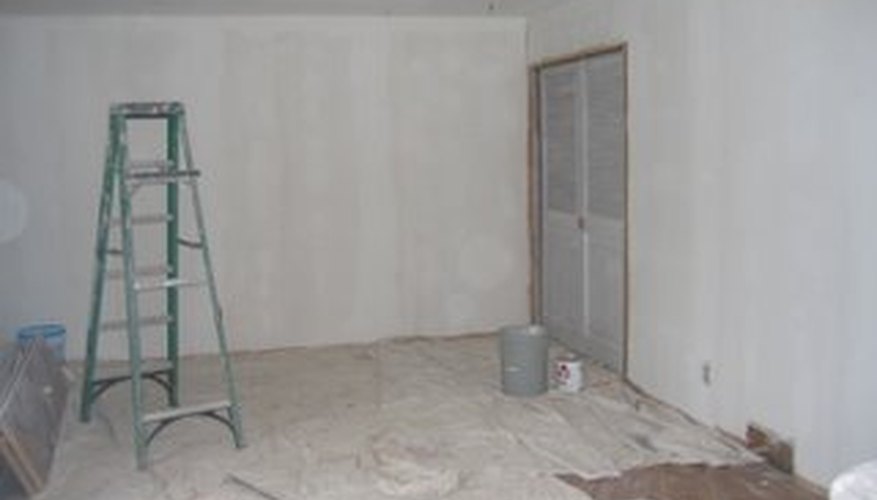Your neighbours probably see the inside of your garage more often than the inside of your home. Every time you open the door, your garage walls are there for the whole neighbourhood to see. There's no reason why garage walls should remain bare, unpainted drywall or painted grubby, flat white. With a few tips and a weekend of work, your garage can be an inspiration.
Preparation
Unless your garage is brand new or empty, your biggest job may be getting it ready to paint. Look at this as an opportunity to clean out and organise your garage. Allow several days of good weather for this: you can't paint your garage walls when it's freezing.
Move everything out of the garage, including removable shelving. If this is a well-used space, there are probably cobwebs and grime to clean, and holes in the drywall that need to be fixed. If the walls are poured cement or breeze block, you will need to take a stiff-bristled broom to the walls to clean off dust, grit and debris.
Most garage drywall jobs are not meticulously finished because builders save money by not putting the final finishing coat of mud over the joints. If this bothers you, consider texturing the walls; this will add at least one more day to the project.
The easiest way to fix large holes in drywall is by using metal mesh drywall patches, available at home and paint stores. You only need to put one coat of joint compound over mesh drywall patches, instead of the customary two or three.
Un-primed drywall should be primed with a PVA or general purpose latex primer. Concrete and breeze block walls don't require priming; simply cover them with at least two coats of your finish paint.
- Unless your garage is brand new or empty, your biggest job may be getting it ready to paint.
- Concrete and breeze block walls don't require priming; simply cover them with at least two coats of your finish paint.
Choosing Paint
Assuming the walls and ceilings are not perfectly flat, but textured or rough, bear in mind that semigloss and high-gloss paint will show every imperfection. A high-quality eggshell or satin finish will offer the best compromise for durability and good looks. Either interior or exterior paint will work fine on garage walls.
- Assuming the walls and ceilings are not perfectly flat, but textured or rough, bear in mind that semigloss and high-gloss paint will show every imperfection.
- A high-quality eggshell or satin finish will offer the best compromise for durability and good looks.
When choosing a colour other than white or off-white, make sure it complements the colours on your home's exterior. Painting one wall with stripes or a faux finish will be a little extra work, but can jazz up the space considerably. Be cautious about bold colours and effects--you will probably be living with your decision for a long time.
Painting Tips
Use dust sheets or large, flattened out cardboard boxes to protect the floor. There is a lot of wall and ceiling square footage in most garages. Make the job easier and faster by purchasing a high-quality roller frame and lambswool roller cover. Work out of a 5 gallon bucket with a grid instead of a rolling pan. These tools are all available at any paint store. You will also need a sturdy extension pole that's long enough to allow you to comfortably roll ceilings and high walls.
Speed the job up even more by renting or borrowing a professional-quality airless sprayer. This takes a little more preparation because you have to mask and cover floors, windows, hardware and anything else you don't want spray painted. However, with a sprayer, you can spray a single coat of paint in an average two-car garage in less than an hour.
- Use dust sheets or large, flattened out cardboard boxes to protect the floor.
- This takes a little more preparation because you have to mask and cover floors, windows, hardware and anything else you don't want spray painted.
